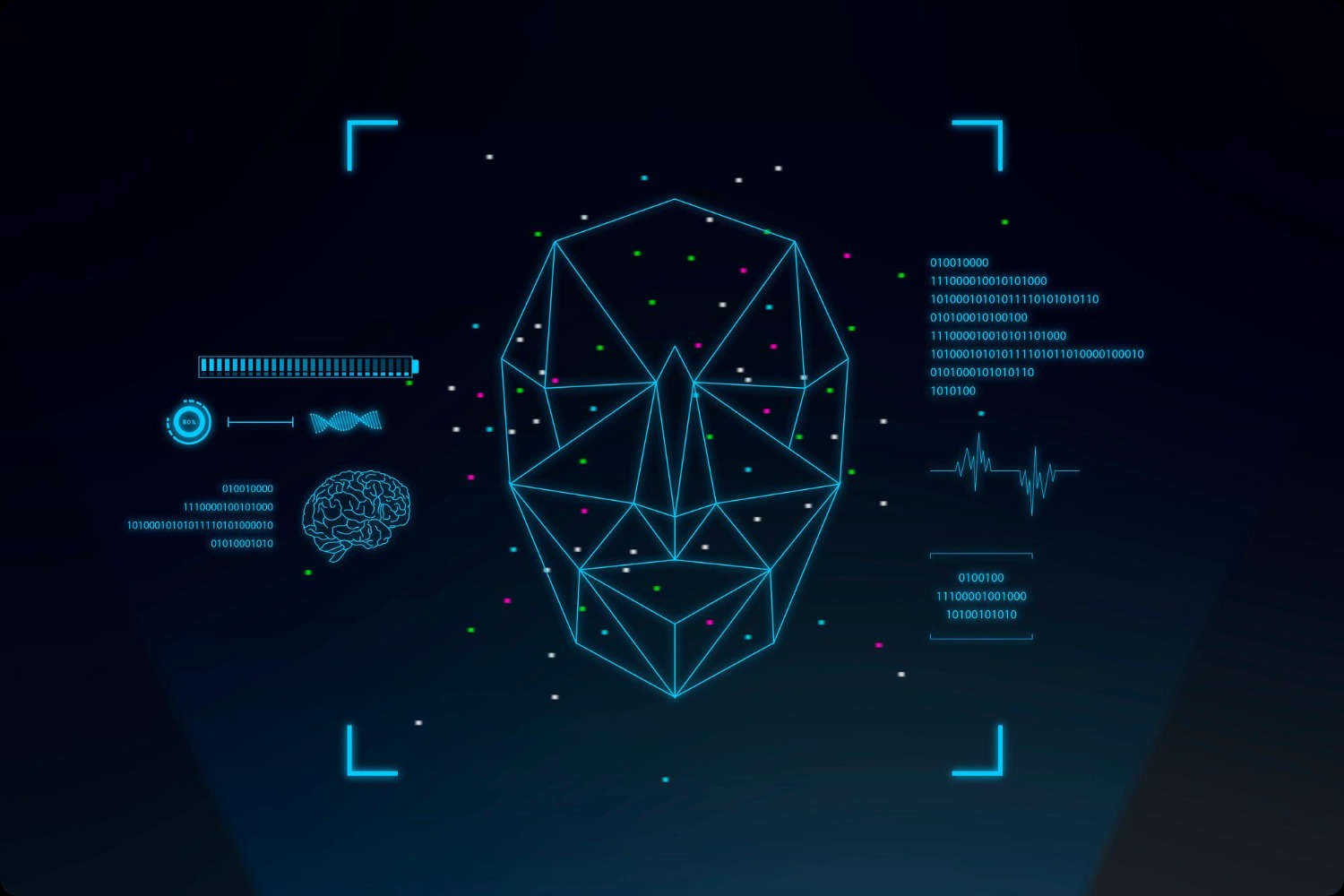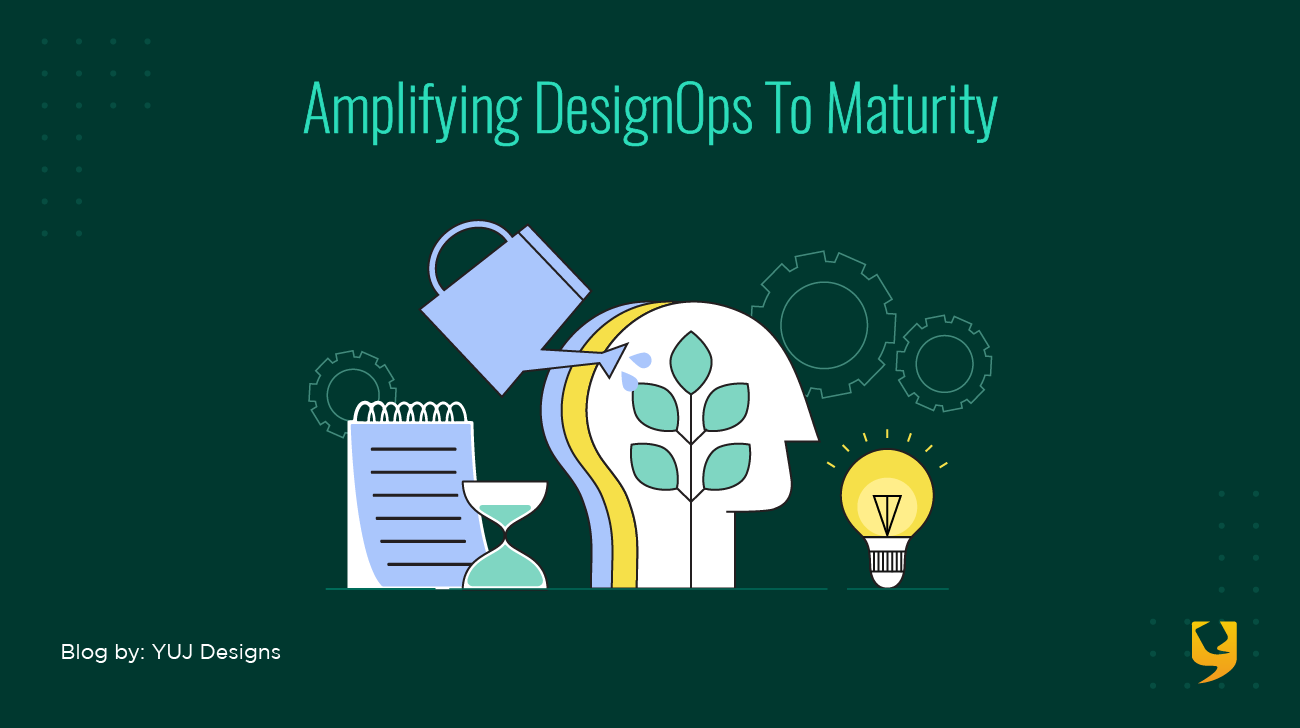
Design is seen as the core capability of mature digital product companies. The depth and breadth of design, team sizes, workload, and complexities are on the rise and so is the responsibility to make it run effectively as well as efficiently.
Samir Chabukswar, CEO & Founder and Prasadd Bartakke, CXO & co-founder – YUJ Designs will take you on a journey to gain insights into how to strategically optimize the design practice and amplify real value. When it comes to DesignOps, here’s the most commonly asked question –
Why and when to think of DesignOps
And the answer is quite simple.
NOW is always the right time to start the design operations!
Before we dig through the information, let us understand the equation of businesses and design and the need and importance of DesignOps for businesses.
Where are you in the design maturity?
This is an observation Samir has made throughout his work with different types of businesses. A roadmap of businesses on a journey to design maturity.
As one would expect, companies and organizations are UX-unaware in the beginning. Often these organizations come across a trigger that makes them think about design. These triggers can be generated in the form of a customer disapproving of a product or even a competitor gaining an advantage due to the failure of the product/ service. This is the juncture when the company looks for outside support, to help them navigate through these unknown waters.
These support efforts are executed by seeking associations with freelance consultants and or even developing in-house capabilities. There are two possibilities that can happen here. If this arrangement functions well, the company’s journey to UX maturity moves along the dotted line to fruition.
If the association doesn’t work well, the companies find themselves still struggling to implement the thought-through design process. This is the crucial phase where organizations need to think of design operations. Hiring the right design talent is extremely important. This curve illustrated here can help all organizations assess their position and take the necessary steps to reach design maturity.
UX Maturity Model
According to a 2016 study of around 400 different companies found that the more a company invested in and focused on design, the higher sales they achieved. Higher customer retention and customer engagement were some more benefits that were observed.
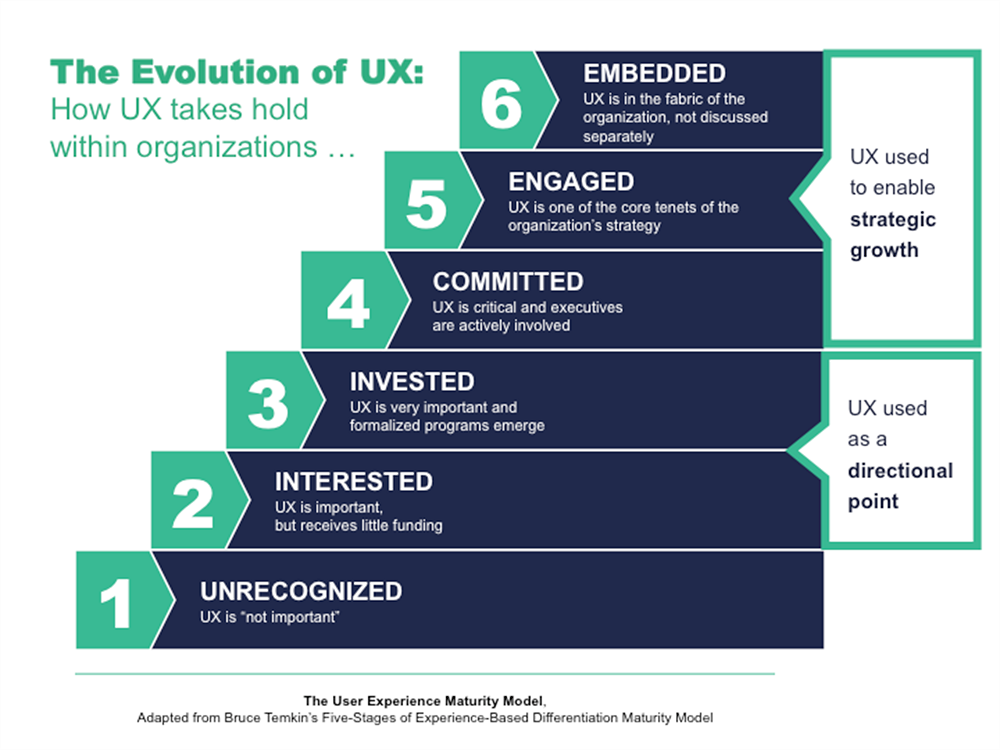
The change was driven through companies focusing more on user-centered design. More importantly, the businesses that held users at the core of all their strategies, experienced the benefits.
After studying these reports and observations, one thing is clear – The sooner you embrace Design, the more time and money you can save
Measuring the Value of Design
Design Value Index is a component of The Design Value System – which are tools and frameworks derived from a series of research studies, surveys, and research programs. These were performed by the Design Management Institute (DMI). They observed the performance of US companies that embraced design as an integral part of their business strategy over a period of 10 years.
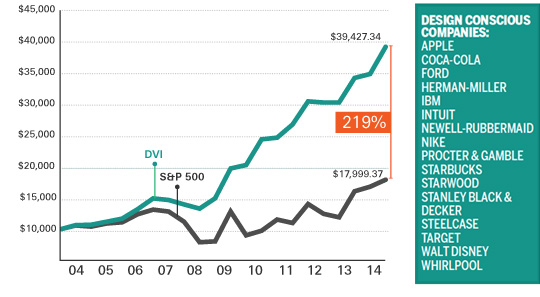
*DMI – international membership that connects designers to business. They are a conglomerate of researchers, designers, and leaders from every industry and design discipline.
The index illustrated here captures the insights of the value some of the Fortune 500-design-conscious companies have created. These companies operationalized design holistically.
The index proves that $1 spent for design yields $2-$100 return
An easier way to explain this is – if an organization spends just 10% on design, it stands to gain about 80% ROI.
When YUJ Designs was founded, the initial client engagements were from the Bay area, the hub of UX design. And there were two specific patterns that one can filter down the client engagements into –
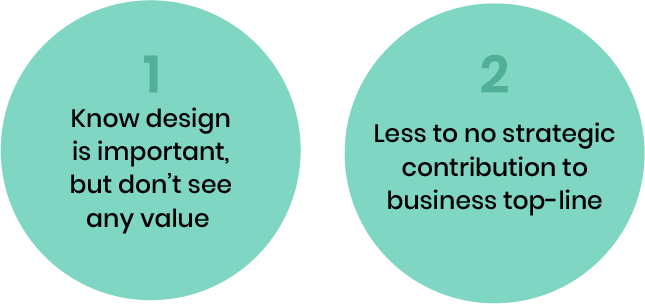
Why DesignOps now?
With the growing adoption of digitization, companies are heavily investing in design. As a result, the design teams are growing in numbers. In a bid to offer maximum value to the customers, the value offerings of the businesses are becoming more and more complex. Organizations transitioning through the UX maturity model, are exploring methods of collaboration with design teams. Design as a function is supporting different departments. Here some of the chief reasons –
- Teams are growing in numbers
- Design solutions are growing in complexity
- Design is supporting various parts of organizations
- Companies are focusing on innovations
- Companies are integrating various types of design practices
- Design talent is a rare commodity, companies need a systematic effort to recruiting the right fit
- Product offerings growing in complexity requires structuring design teams
Design is not just a job you show up at and continue working linearly. The design industry and its equation with the business are evolving day by day. Just a few years ago it started with a GUI (Graphical User Interface) and now the design has evolved into a force that can impact the users’ cognition to generate the desired results.
Multi-faceted Functions of DesignOps
DesignOps is a system that enables the management to –
- Scaling design and design teams. Amplifying design efforts for more efficiency
- Operationalizing workflow. DesignOps can help businesses streamline interdependencies, processes, and establish an equal business understanding.
- Hiring and managing the right talent. Hiring the talent and ensuring a growth path for them, and bring a structure to the department.
- Alignment of teams and departments.
- Focus on the output to be delivered within time and with quality.
- Continuous upgrade and maturing design services
Essentially, DesignOps take the organizations towards the Desired Impact.
Goals of DesignOps
By now, you have understood that DesignOps isn’t just talent management. But, it is much more than that. Primary goals of DesignOps can be filtered to –
- Standardize and optimize everything
- Make the routine things predictable
- Set processes, to avoid reinventing the wheel
Though the biggest advantage of DesignOps to the design teams is far beyond these aspects.
DesignOps helps the design teams to focus on design thinking, creativity, and innovation.
Rest everything is managed by the DesignOps.
Before taking the critical decision of embracing the DesignOps it is necessary to know the goals of your business. Have a dialogue with key decision-makers of the organization and define the direction in which the company will grow. After this research, collate all the pain points, illustrate the impact, and articulate the requirements DesignOps will be addressing. If DesignOps already exists in bits and pieces then, determine how you can amplify the efforts better.
To help design and DesignOps deliver the desired impact, one also needs to look inwards and find advocates of design in the key positions. Evangelizing the reason that in design’s success lies every other department’s success also, is necessary. A design effort will only solidify with such support.
In conclusion, businesses need to have the Mindset that understands the need for a structured ecosystem. The other aspect is how businesses execute this mindset. Businesses need to empower design, designers, and design thinking throughout the organization to build in accountability, predictability, and credibility.
Amplify your brand presence with the best UX design studio that truly aligns your needs with those of your consumers! Get in touch with us at YUJ Designs, today!


